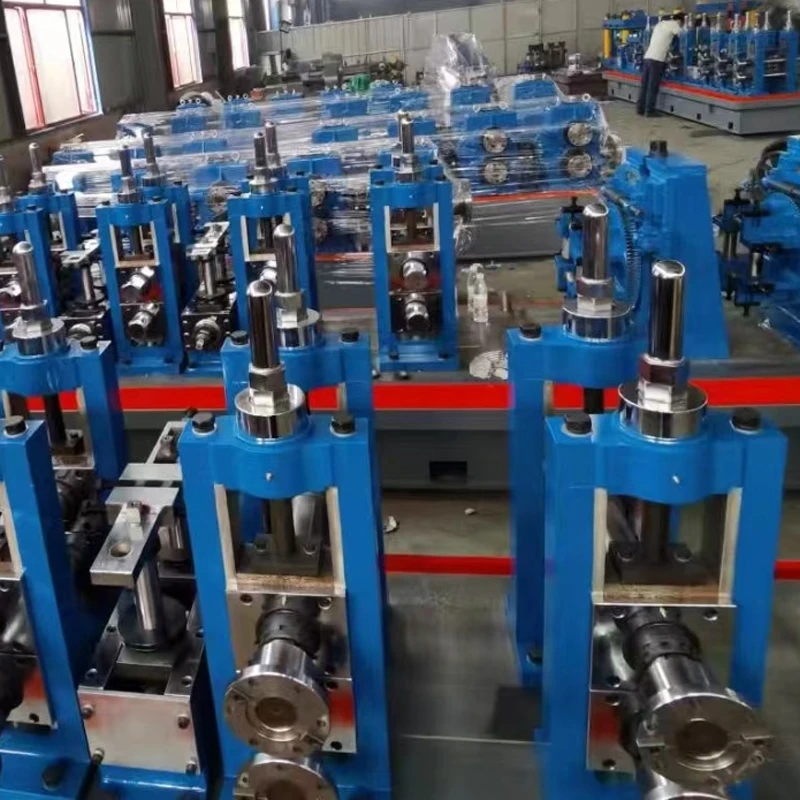Steel Wire Straightening and Cutting Equipment for Efficient Manufacturing Processes
The Importance of Steel Wire Straightening and Cutting Machines in Modern Manufacturing
In the ever-evolving landscape of manufacturing, the precision and efficiency of production processes are paramount. One critical element in the fabrication of various metal products is the initial preparation of raw materials, particularly steel wire. Steel wire straightening and cutting machines have become essential equipment in this regard, playing a vital role in ensuring that the wire is shaped and cut to exact specifications, ultimately enhancing the quality of the final product.
Understanding the Functionality
Steel wire straightening and cutting machines are designed to handle raw steel wire of various diameters and materials. The primary functions of these machines include straightening the wire, which involves removing any bends, twists, or deformities, and cutting it to specific lengths. The process begins with feeding the raw wire into the machine, where it is subjected to straightening rollers. These rollers exert pressure on the wire, gradually aligning it to achieve a straightened form.
Once the wire has been adequately straightened, the cutting mechanism is activated. Different machines employ various cutting technologies, including shearing blades or rotary cutting systems, to produce precise cuts. This ensures that each piece of wire is uniform in length, which is crucial for downstream operations in manufacturing settings.
Benefits of Using Straightening and Cutting Machines
1. Increased Efficiency Automating the straightening and cutting process significantly enhances production efficiency. Manual operations can be slow and prone to human error, leading to inconsistencies in wire length and shape. Machines can operate continuously, producing large quantities of straightened and cut wire in a fraction of the time it would take to do manually.
2. Improved Accuracy Precision is paramount in manufacturing, especially when wires are components for critical structures or devices. Steel wire straightening and cutting machines can achieve tolerances that are often unattainable through manual handling, ensuring that manufacturers receive materials that meet their exact specifications.
steel wire straightening cutting machine

3. Superior Quality Control Automated machines can incorporate quality control measures within the production process. For example, they can be equipped with sensors that detect irregularities in wire thickness or straightness, allowing for immediate corrections before the product moves forward in the production line.
4. Cost-Effectiveness Although the initial investment in steel wire straightening and cutting machines can be significant, the long-term savings are noteworthy. By reducing labor costs, minimizing waste due to errors, and increasing throughput, manufacturers can see a considerable return on their investment.
Applications in Industry
Steel wire straightening and cutting machines are utilized across a range of industries. In the construction sector, for example, they are essential for producing rebar that meets stringent standards for use in concrete structures. In automotive manufacturing, straightened and cut wire is often used in the production of springs, cables, and other critical components. Additionally, these machines are vital in the wire product industry, where straightened wire is needed for manufacturing items such as fencing, wire mesh, and reinforcement wires.
Maintenance and Operation
To ensure optimal performance, regular maintenance of steel wire straightening and cutting machines is crucial. This includes routine inspections and lubrication of moving parts, replacement of worn-out components, and calibration to maintain cutting precision. Operators must also be trained to handle the machinery properly, ensuring a safe working environment and minimizing downtime.
Conclusion
In conclusion, steel wire straightening and cutting machines are indispensable assets in the modern manufacturing landscape. They bring about enhanced efficiency, improved accuracy, and superior quality control, making them essential for industries that rely on high-quality steel wire products. As technology continues to advance, these machines are likely to evolve further, incorporating intelligent systems that offer real-time monitoring and data analysis. For manufacturers aiming to maintain competitiveness in a fast-paced market, investing in advanced steel wire straightening and cutting machinery is not just a choice; it is a necessity.
-
High Frequency Straight Seam Welded Pipe Production Line-BzZhou Xinghua Machinery Equipment Manufacturing Co., LTD.|line pipe steel&welded gas pipeNewsJul.30,2025
-
High Frequency Straight Seam Welded Pipe Production Line-BzZhou Xinghua Machinery Equipment Manufacturing Co., LTD.|High Precision&Automated SolutionsNewsJul.30,2025
-
High Frequency Straight Seam Welded Pipe Production Line - BzZhou Xinghua Machinery Equipment Manufacturing Co., Ltd.NewsJul.30,2025
-
High Frequency Straight Seam Welded Pipe Production Line-BzZhou Xinghua Machinery Equipment Manufacturing Co., LTD.|Precision Welding, High EfficiencyNewsJul.30,2025
-
High Frequency Straight Seam Welded Pipe Production Line|BzZhou Xinghua|Precision Welding&EfficiencyNewsJul.30,2025
-
High Frequency Straight Seam Welded Pipe Production Line - BzZhou Xinghua|Precision Engineering&EfficiencyNewsJul.30,2025


